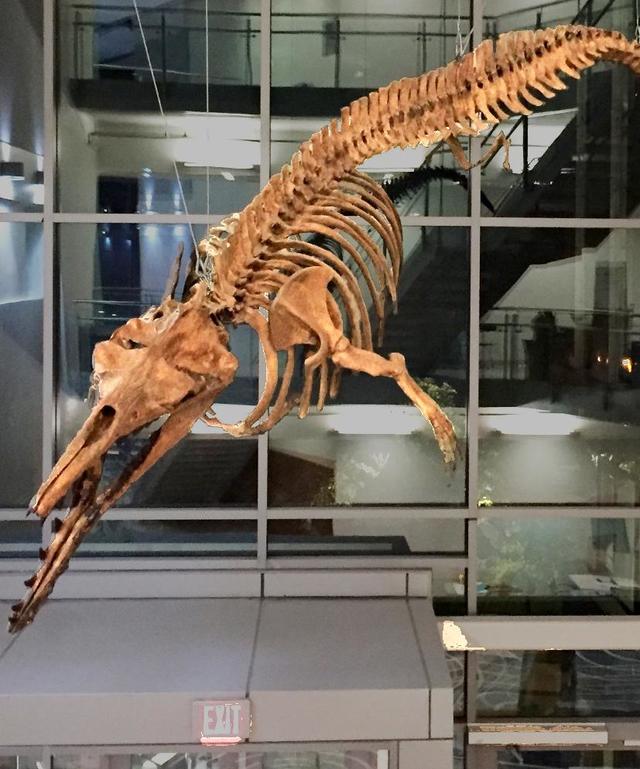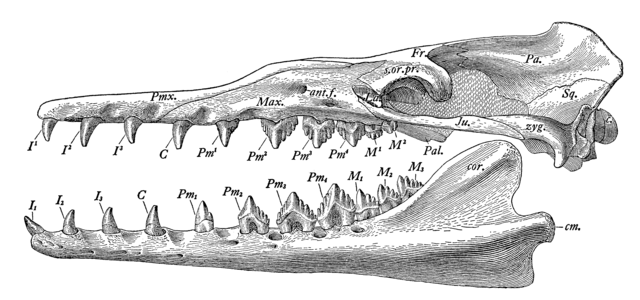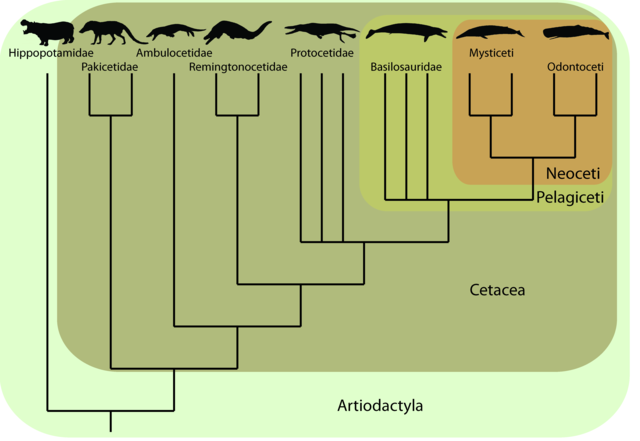Zygorhiza kochii
Admission CTAs
Main navigation
Section Navigation: Facilities

Location: Exploratory Hall Atrium
Zygorhiza kochii: skeleton
Zygorhiza kochii is a species of extinct whale known from the late Eocene (around 36 million years ago) of the Gulf Coast of the United States. This skeleton was originally displayed in the Life in the Ancient Seas exhibit at the Smithsonian’s U.S. National Museum of Natural History, and came to Mason in 2015 after the Smithsonian began renovation of its fossil exhibit halls.

Z. kochii was one of the first fully aquatic whales and had large, multi-cusped teeth for shearing prey items like fish and squid. CLICK HERE to see some of the original drawings of Zygorhiza kochii.

Zygorhiza kochii in Whale Evolution
Whales evolved from terrestrial mammals, and their closest living relatives are hippos (in the Family Hippopotamidae). Hippos and whales are part of a large group of mammals that make up the even-toed ungulates (hooved mammals) called Artiodactyla.
While modern whales lack external hind limbs, the earliest whales had large hind limbs and were semi-aquatic. Members of the Family Basilosauridae, including Zygorhiza, had very reduced hind limbs, and are the closest relatives of modern whales, the Neoceti. Want your own Zygorhiza kochii skeleton?

Zygorhiza kochii: biogeography
Zygorhiza kochii is known from the late Eocene of the Gulf Coast of the United States. Specimens have been described from Louisiana, Mississippi, and Alabama. In fact, Zygorhiza kochii is the state fossil of Mississippi. Z. kochii specimens are shown on the map below in white circles, along with other closely related Eocene whale species.
All of the fossils occur in a single geologic unit, the Jackson Group which is a body of rock that was deposited in shallow water along the coast around 36 million years ago.

Much of the information on Zygorhiza kochii comes from the work of our own Dr. Mark D. Uhen. Learn more about Dr. Uhen’s research on early whales.
